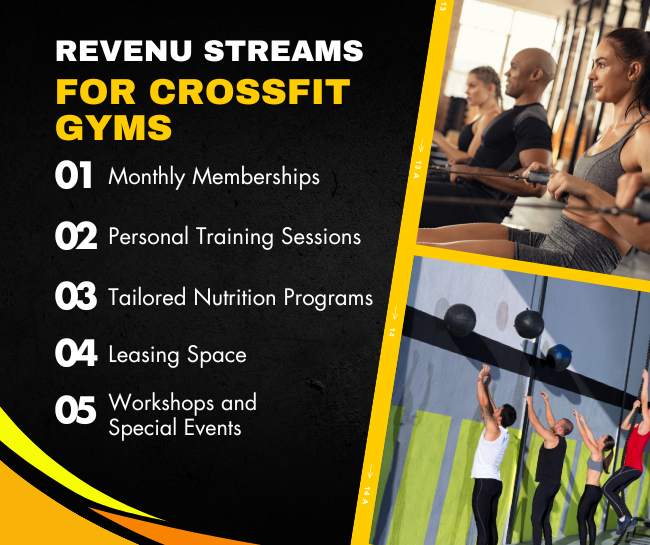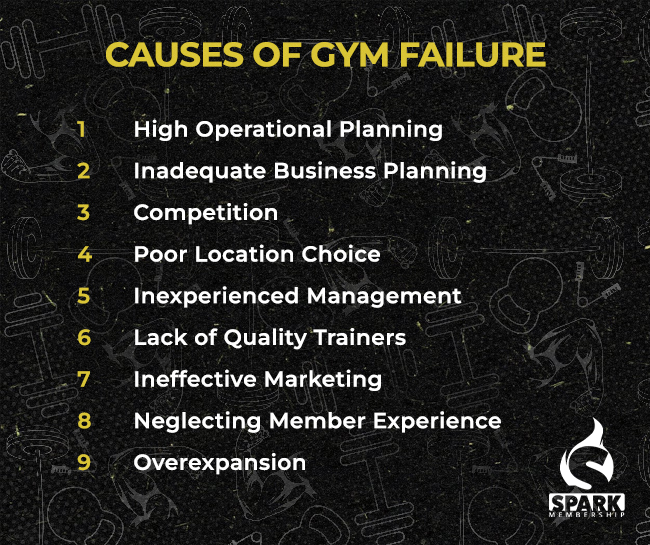
In the world of fitness, CrossFit stands out with its intense routines and dedicated following. For those who love fitness and are thinking of turning this passion into a business, one pressing question often arises: “Are CrossFit gyms profitable?” Join us as we dive deep into the financial aspects of CrossFit and shed light on its potential as a business venture for fitness enthusiasts like you.
The Rise of CrossFit and its Business Potential

From its inception in 2000, CrossFit’s growth trajectory has been impressive. Thanks to its emphasis on functional movements and community-driven approach, it has amassed a fervent global following.
💡CrossFit’s explosive rise not only transforms bodies but also business prospects, revealing a profitable fitness frontier.
Popularity and Growth Trends

CrossFit stands out in the fitness arena with staggering numbers backing its global appeal. Data from CrossFit HQ confirms: over 5 million enthusiasts in 120 countries, training at 15,000 dedicated gyms. These figures aren’t just a passing trend but proof of CrossFit’s worldwide dominance and the growing community eager to be part of it.
Potential Revenue Streams for CrossFit Gyms:

CrossFit gyms are not just about monthly memberships; they’re revenue-generating hubs with diversified income avenues. Some of the key revenue streams include:
- Monthly Memberships: This consistent flow is the backbone of their financial structure.
- Personal Training Sessions: Gyms amplify their earnings by offering bespoke sessions tailored to individual needs.
- Tailored Nutrition Programs: Catering to health-conscious members and adding another layer to the gym’s revenue.
- Leasing Space: Facilities within the gym can be rented to professionals, from dieticians to massage experts, providing a steady non-operational income.
- Workshops and Special Events: CrossFit gyms frequently host these, further contributing to the overall profitability of the venture.
Breaking Down the Costs and Earnings of Opening a CrossFit Gym
Starting your own CrossFit gym is exciting, but it does come with its set of costs. Here’s a simple look at what you might need to spend and what you could potentially earn.
What You Might Spend:

- Finding a Place: Getting a spot, whether rented or bought, could cost around $20,000. This depends a lot on where you want to set up.
- Gym Gear: You’d need about $15,000 for essential stuff like weights, racks, and mats.
- Fixing Up Your Space: To make your gym feel just right, you might spend close to $10,000 on sprucing things up.
- Official Paperwork: Set aside about $2,000 for things like licenses and maybe a bit of legal advice.
- Tech Stuff: You’ll want some software to help track workouts and handle payments. Think of setting aside $2,000 for this.
- Getting the Word Out: Plan on spending about $5,000 on ads, flyers, or anything else to let people know you’re open for business.
- First-Time Supplies: Consider spending $3,000 on things like fitness supplements or gym wear for sale.
💡 These are ballpark numbers and can change based on your choices and location.
What You Might Earn:

Your earnings will mainly come from people signing up. If members pay between $100 to $200 a month, it adds up quickly. For instance, 300 members at $100 each month gives you $30,000. Over a year, you could see profits around $40,000, especially if you offer additional services or classes.
💡 Starting a gym involves upfront costs, but with passion and good planning, it can turn into a rewarding venture.
Key Factors Influencing Profitability for CrossFit Gyms

- Location, Location, Location: Just like in real estate, the venue of your CrossFit gym can make a significant difference. A gym located in a bustling urban setting or near offices might attract more members than one tucked away in a less-trafficked area.
- Membership Pricing: Setting the right price for your services is crucial. Too high, and you might drive potential members away; too low, and you might not cover your costs. Research what competitors charge and consider your offerings and local economy.
- Operational Costs: These include rent, salaries, utilities, and equipment maintenance. Efficiently managing these costs without compromising on quality can significantly boost profitability.
- Retention Rates: It’s often cheaper to retain an existing member than to acquire a new one. Offering excellent service, maintaining a community feel, and providing ongoing value can keep members loyal.
- Additional Services: Beyond standard memberships, offering personalized services such as personal training sessions, nutritional guidance, or specialized workshops can diversify income streams.
- Marketing and Outreach: Effective marketing can bring in new members. Whether through word-of-mouth, social media campaigns, or community events, ensuring your gym’s visibility is essential.
- Quality of Trainers: Investing in skilled and certified trainers not only enhances your gym’s reputation but also ensures safety and results for your members.
- Facility Maintenance: Members are more likely to continue their memberships at clean, well-maintained facilities. Regular upkeep and updating of equipment when necessary can influence member satisfaction.
- Class Variety and Timing: Offering a mix of classes at times that are convenient for members can cater to a wider audience, increasing attendance and membership.
- Community Engagement: Building a sense of community in your gym can foster loyalty. Organize events, competitions, or social gatherings for members to bond.
💡 Understanding these factors and adapting your business strategy accordingly can significantly influence the success and profitability of your CrossFit gym.
CrossFit Gym Failure Rate and its Implications
While the popularity of CrossFit continues to surge, not every CrossFit gym manages to capitalize on this trend. A concerning statistic from a recent study suggests that roughly 10% of new CrossFit gyms close within their first year. This rate of closure underscores the challenges in this domain, despite the booming interest.
Reasons behind Gym Failures:

- High Operational Costs: Rent, equipment maintenance, and staff salaries can quickly drain the resources of a newly established gym, especially if they haven’t secured enough members initially.
- Inadequate Business Planning: Entering the fitness industry without a solid business plan or understanding of the market can lead to poor decision-making and financial pitfalls.
- Competition: With the surge in CrossFit’s popularity, many areas are saturated with gyms. New gyms might find it challenging to carve out their niche or differentiate themselves.
- Poor Location Choice: Being off the beaten path or in an area with little foot traffic can drastically reduce a gym’s visibility and potential clientele.
- Inexperienced Management: Running a gym requires specific business acumen. Lack of experience in managing finances, staff, or marketing can be detrimental.
- Lack of Quality Trainers: Compromising on trainer quality can affect a gym’s reputation and member satisfaction, leading to reduced renewals.
- Ineffective Marketing: In today’s digital age, not having a robust online presence or not engaging in community outreach can make gyms invisible to potential members.
- Neglecting Member Experience: Failing to foster a sense of community, not maintaining cleanliness, or not updating equipment can deter members from renewing their memberships.
- Overexpansion: Rapidly trying to expand without having a stable member base or the funds to support the expansion can strain resources.
Understanding these pitfalls is crucial for any aspiring CrossFit gym owner. By learning from these common mistakes, one can increase their chances of building a successful and sustainable fitness business.
Navigating the question, “Are CrossFit gyms profitable?” unveils a nuanced answer. Yes, they can be immensely profitable, but success demands more than passion. It calls for strategic planning, understanding market demands, and nurturing a dedicated community. For those considering embarking on this venture, focusing on these core pillars, coupled with solid business acumen, can turn a passion for CrossFit into a thriving, rewarding enterprise.
Elevate your CrossFit Box with our latest blog: “How to Manage Your CrossFit Box’s Schedule and Programming with Software.” Get ahead with Spark Membership Software for streamlined operations.t ahead with Spark Membership Software for streamlined operations.




